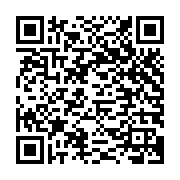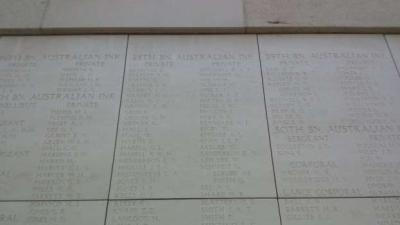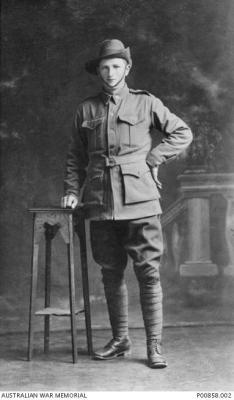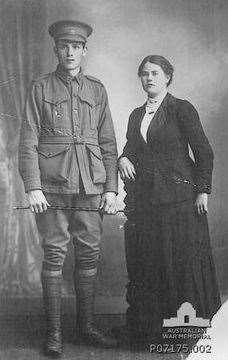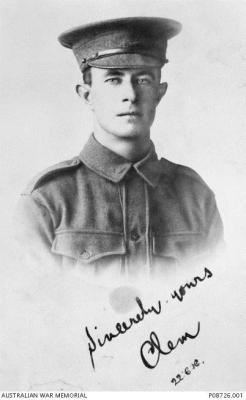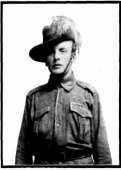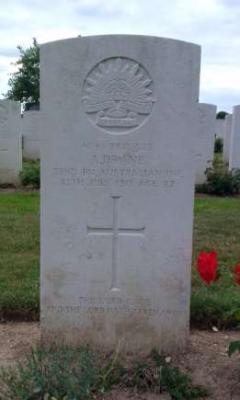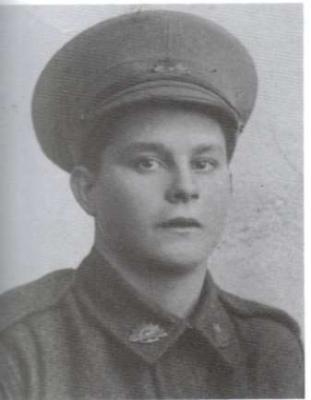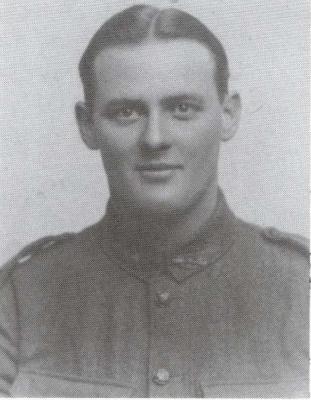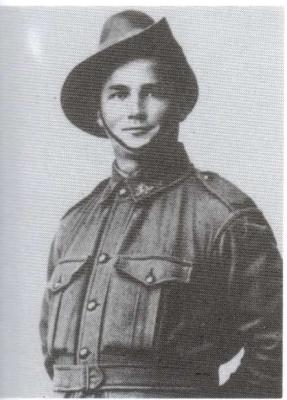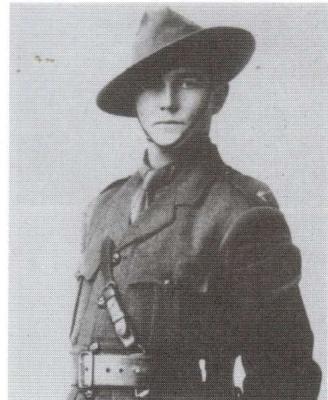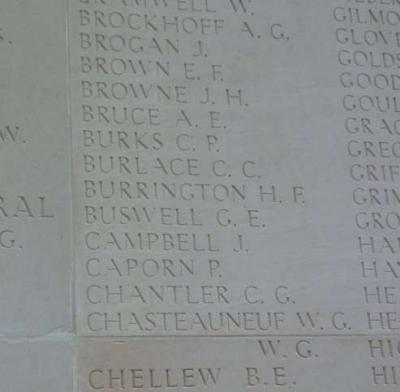Not Forgotten, 931 Lance Sergeant William John HAMILTON MM, 12 Battalion AIF, World War 1
Commemoration of the military service of 931 Lance Sergeant William John Hamilton MM, 12 Battalion AIF, died of wounds, 19 August 1918.
William Hamilton, a farm labourer of Goomalling, was born near Roscommon in Northern Ireland, the son of Archibald Hamilton of Belfast. His brother, Robert George Hamilton, served in the 10th Light
Horse and returned to Goomalling. William Hamilton, previously trained as a block printer, enlisted on 31 August 1914 at the age of 24, having served 175 days with the Royal Irish Rifles and discharged asmedically unfit because of an injured shoulder. He was placed in the 12th Infantry Battalion and embarked on H.M.T. Devanha to join the Mediterranean Expeditionary Force on the Gallipoli Peninsula from Alexandria.
While on the Gallipoli Peninsula Hamilton was hospitalized for pyrexia or fever on 31 July 1915, taken to the General Hospital at Alexandria and remained there for a week. In early August he was in hospital with influenza and pyrexia again. In September he was diagnosed with enteric fever and transferred to Port Said and in November, given 3 months convalescence, he was transferred via H.S. Goorkha to the 2nd Southern General Hospital in Bristol. In August 1916 he was well enough to be taken on strength with the 12th Battalion in France, although in December he was in the Field Hospital in Havre, this time with rheumatism and trench foot which kept him in the hospital for a fortnight. In January William Hamilton was back in the 2nd General Hospital in Havre with trouble with his feet; in February with bronchitis, and then back with the battalion in early April.
William Hamilton was promoted to Lance Corporal on 7 July 1917 and to Corporal on 11 August 1917. He was awarded the Military Medal for his conduct during the battle for Polygon Wood. During the attack on Polygon Wood, east of Hooge, on the night of 20/21 September 1917, Corporal Hamilton along with Private Thomas Burgess were instrumental in the capture of a strong post on the left flank. With great tact and fearlessness they moved round to its rear and gallantly rushed it, causing its garrison of some dozen Germans to surrender. His Military Medal was listed in London Gazette of 14 December 1917.
At the end of September 1917 Hamilton went on leave in Belgium; at the end of October he was appointed Lance Sergeant. In November he was back in hospital with bronchitis and was again sent to England, this time to the Bevan Hospital in Shorncliffe and then to the Fovant Military Hospital. Despite returning to France, he was still unwell until he rejoined the battalion in July 1918. On 17 August 1918 he was wounded in action, suffering shrapnel wounds to his face causing a compound fracture of the skull, and right arm. He was taken to the 2nd Canadian General Hospital partly unconscious but never regained consciousness and died of his wounds at 2 a.m. on 19 August 1918 and is buried at the Mont Huon Cemetery in Le Treport.
Lance Sergeant Hamilton was awarded the Military Medal, 1914/15 Star, the British War Medal and the Victory Medal.
Details
Details
When the Great War broke out in Europe in 1914, Dowerin was an isolated farming district, several days travel by horse or by coach from Perth. Over the succeeding four years at least 176 men and one nurse served in the armed forces of the Empire. The names of the men who served can be read on the Honour Roll in the Dowerin Town Hall or can be accessed on the museum section of the Shire of Dowerin website.
Fifty-one men from the district died in the Great War and their names are inscribed on the Dowerin War Memorial which was unveiled on ANZAC Day 1936. Subsequent conflicts have seen more names memorialised and each ANZAC Day their sacrifice is honoured and remembered by the community.
For some years Diane Hatwell had been intrigued by the names on the Dowerin War Memorial. Some were familiar with the families still in the district but some not so. Diane felt It was important for the community that when we said each ANZAC Day “We will remember them”, we had some idea of who and what we are remembering. She set about, to find out who they were, what they were doing in the Dowerin district, and where and how they died. These pages presented through Collections WA represent the current state of this ongoing research and community response.
Open in Google Maps
Nearest geotagged records: View all geotagged records »
Other items from Dowerin District Museum
- Not Forgotten, 6322 Private Alfred GROVES, 28 Battalion AIF, World War 1
- Not Forgotten, 2574 Private George William Thomas GREENHAM, 44 Battalion AIF, World War 1
- Not Forgotten, 2891, Private Arthur Engle GREENHAM, 48 Battalion AIF, World War 1
- Not Forgotten, 865 Corporal Clement Cook Junction FREARSON, 44 Battalion AIF, World War 1
- Not Forgotten, 65 Sergeant Henry John EATON, 10 Light Horse AIF and 51 Battalion AIF, World War 1
- Not Forgotten, 4049 Private Alfred DRANE, 32 Battalion AIF, World War 1
- Not Forgotten, 3440 Private Charles Thomas DAY, 16 Battalion AIF, World War 1
- Not Forgotten, 2896 Sergeant Thomas Montague DAVIES, 51 Battalion AIF, World War 1
- Not Forgotten, 7097 Corporal Wesley John COOKE, 16 Battalion AIF, World War 1
- Not Forgotten, 882 Lieutenant Leonard Charles COOKE MC, 11 Battalion AIF, World War 1
- Not Forgotten, 3132 Private Frank James CARD, 48 Battalion AIF, World War 1
- Not Forgotten, 4758 Private George Edward BUSWELL, 48 Battalion AIF, World War 1
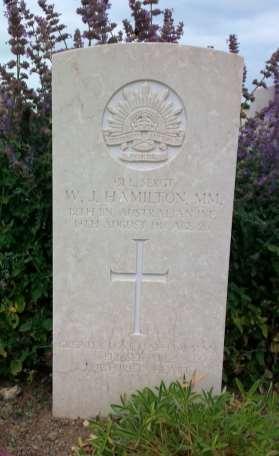
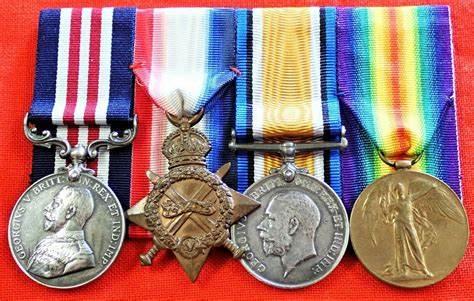
Scan this QR code to open this page on your phone ->
